Blogs

Why This Element Is Often Found in Magnetic Materials: Key Reasons Explained
Introduction
The landscape of magnetic materials is increasingly complex and pivotal in driving innovation across various industries, particularly in electric vehicles and advanced electronics. With their unique properties, such as coercivity and saturation magnetization, these materials are essential for enhancing performance and efficiency in applications ranging from electric motors to data storage systems.
As procurement managers navigate this dynamic environment, understanding the fundamental characteristics and sourcing challenges of key elements like neodymium and cobalt becomes crucial. Recent market trends reveal a surge in prices and demand, underscoring the importance of strategic sourcing decisions to mitigate risks associated with fluctuating costs and supply chain uncertainties.
This article delves into the fundamental properties of magnetic materials, their applications, and the regulatory considerations that shape sourcing strategies, equipping procurement professionals with the insights needed to thrive in this evolving sector.
Fundamental Properties of Magnetic Materials
Ferromagnetic substances have unique characteristics that allow them to respond to fields, and this element is often found in magnetic materials, especially noticeable in ferromagnetic examples. These substances, which are characterized by their capacity to maintain magnetization even after the external magnetic field is removed, demonstrate a crucial attribute for numerous applications ranging from electric motors to advanced data storage systems; this element is often found in magnetic materials. The primary characteristics of these substances, which include permeability, coercivity, and saturation magnetization, demonstrate that this element is often found in magnetic materials.
The atomic structure and electronic configuration of the substances significantly influence each of these characteristics, especially since this element is often found in magnetic materials. For example, components such as iron, cobalt, and neodymium are essential in the creation of attractive substances because this element is often found in magnetic materials, which helps to augment these basic characteristics and results in better performance in practical uses. However, purchasing managers must navigate significant challenges, particularly the high expenses of raw components for permanent magnets, which can hinder industry growth.
According to recent statistics from 2024, the prices of essential resources have surged by 15%, emphasizing the significance of strategic sourcing choices. As industry specialists highlight, ‘Grasping the characteristics of ferromagnetic substances is essential for purchasing managers to make knowledgeable choices in a setting of varying expenses and supply chain uncertainties.’ These insights emphasize the necessity for procurement professionals to stay informed about the evolving landscape of magnetic substances.
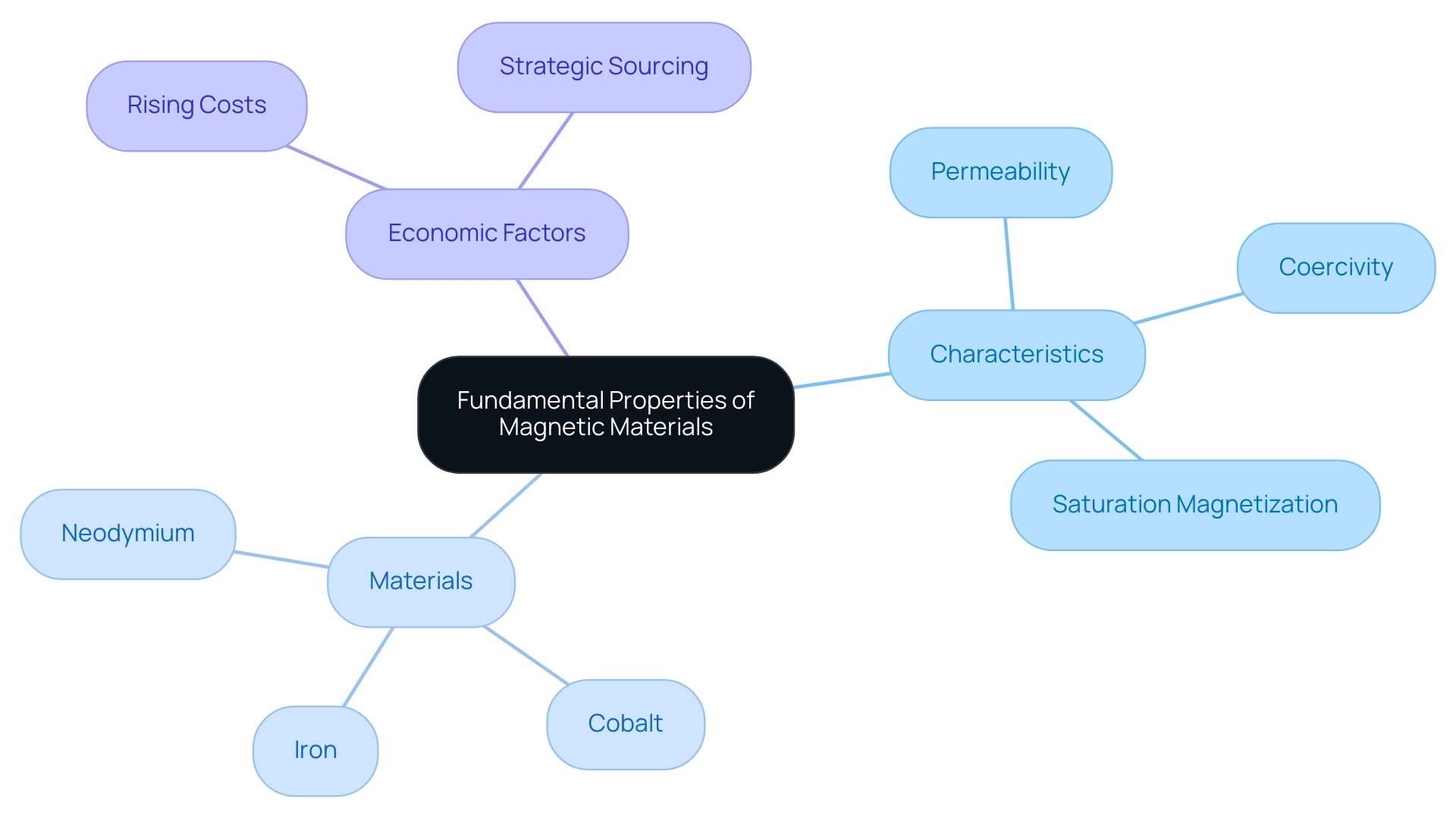
Key Elements in Magnetic Materials: Neodymium, Cobalt, and Beyond
In producing high-performance magnets, particularly in the evolving landscape of electric vehicles and consumer electronics, this element is often found in magnetic materials such as neodymium, cobalt, and iron. The synthesis reaction of these substances occurs at 850 °C under autogenic pressure, highlighting the intricate production processes involved. Neodymium magnets are celebrated for their remarkable strength, rendering them essential in these uses.
Recent market analyses indicate that neodymium magnets now dominate a significant share of the magnet market in electric vehicles, reflecting their critical role in enhancing energy efficiency and performance. Cobalt enhances the strength of alloys and thermal stability, essential for high-temperature uses, thereby reinforcing its position as a crucial element in advanced materials. Importantly, the multiphasic oxide layers greatly contribute to the corrosion inhibitions for the metallic particles, where the corrosion current density (I corr) was sharply decreased from 50.12 μA⋅cm for the pure α-Fe metal to 0.99 μA⋅cm for the Fe/Co oxide@α-Fe core–shell composites.
The unique characteristics of these elements are mainly ascribed to their electronic configurations, which encourage strong interactions at the atomic level. Furthermore, components such as samarium and dysprosium are crucial in specialized uses where this element is often found in magnetic materials due to their particular properties related to magnetism. The crystal structures of SmCo and NdFeB magnets, with SmCo displaying a hexagonal structure and NdFeB a tetragonal structure, illustrate how this element is often found in magnetic materials and how these configurations influence their magnetic properties and applications.
This understanding equips procurement managers with the knowledge needed to make strategic decisions when sourcing resources, ensuring compliance with international standards while optimizing both performance and cost-effectiveness.
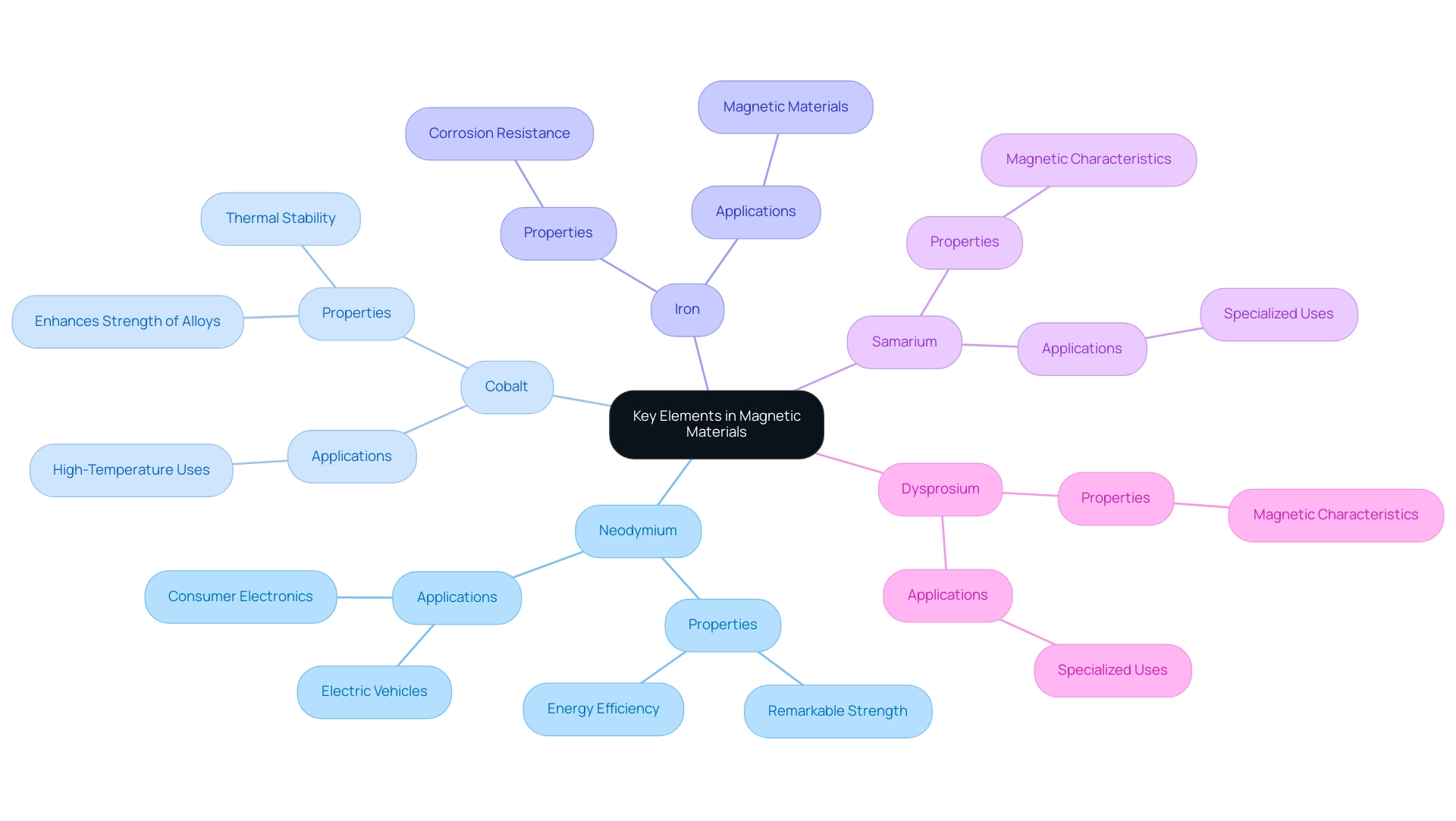
Applications of Magnetic Materials in Industry
This element is often found in magnetic materials, which are foundational to various industries, particularly in the automotive and electronics sectors. In the realm of electric vehicles (EVs), high-strength magnets, which are this element often found in magnetic materials, play a pivotal role in enhancing the efficiency of electric motors and energy storage systems. Complementing these advancements, our Mica Tape Products, including Mica Sheet Tape and Insulating Mica Tapes, offer critical high-temperature resistance and excellent electrical insulation.
Mica Sheet Tape is particularly suited for insulating large flat surfaces, making it ideal for aerospace and automotive uses, while Insulating Mica Tapes provide exceptional thermal and electrical insulation, essential in the construction of coils and capacitors. This makes them essential for various uses, from household appliances to industrial machinery, ensuring reliability and durability. The burgeoning demand for lightweight and compact designs has spurred significant innovation, leading to the development of high-performance neodymium magnets, characterized by their superior strength-to-weight ratios, making them ideal for applications in consumer electronics, such as hard drives and speakers.
A significant statistic shows that the advanced materials market related to magnets is expected to attain $48.91 billion by 2032, with a compound annual growth rate (CAGR) of 9.3%. This growth highlights the rising significance of ferromagnetic substances, where this element is often found in magnetic materials, in sectors like renewable energy, crucial for enhancing the efficiency of wind turbines and generators. As purchasing managers face challenges like supplier shortages, effective negotiation strategies become crucial for maintaining inventory levels; understanding the applications of magnetic materials and high-quality insulation products, like Mica Tape, can inform these strategies.
Furthermore, collaboration and communication within purchasing teams are vital, as highlighted by the quote:
‘Address a colleague undermining your work with open communication, documentation, and involving management if necessary.’
This approach fosters a supportive environment for sourcing strategies. Additionally, the case study of Indorama Ventures acquiring the ethylene business of Huntsman Corporation for $2 billion illustrates strategic decision-making in purchasing, enhancing market competitiveness and access to new derivative products.
By understanding these applications, procurement professionals can strategically align their sourcing practices with evolving industry demands, ensuring the selection of the most appropriate resources for specific applications. Furthermore, as emphasized by industry specialists, the incorporation of advanced materials, along with strong solutions such as Mica Tape, which offers flame resistance and dielectric strength for electrical safety, greatly improves product performance across diverse platforms, further reinforcing their importance in today’s competitive environment.
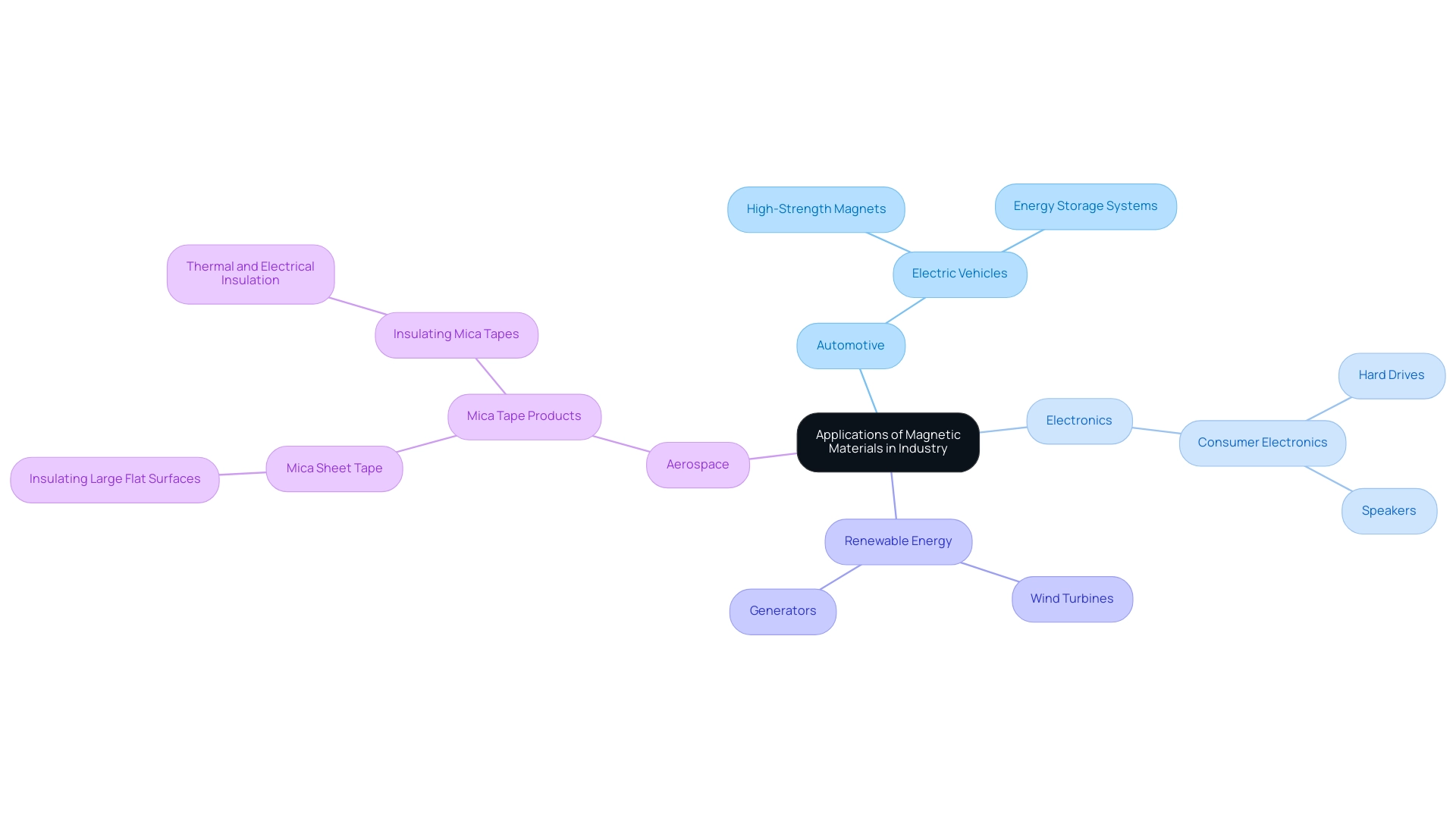
Environmental and Regulatory Considerations in Sourcing
Navigating the sourcing of ferromagnetic substances requires a thorough understanding of various environmental and regulatory frameworks. Adherence to global standards like REACH (Registration, Evaluation, Authorisation and Restriction of Chemicals) and RoHS (Restriction of Hazardous Substances) is essential in guaranteeing that substances do not pose risks to human health or the environment. Recent market estimates suggest that North America’s soft ferromagnetic sector is experiencing substantial growth, propelled by the increasing adoption of electric vehicles and investments in renewable energy infrastructure.
This growth has brought the sourcing of rare earth elements under scrutiny, with concerns around ethical mining practices and environmental sustainability becoming paramount. As a result, purchasing managers are compelled to prioritize suppliers who demonstrate responsible sourcing practices. A notable example is Neo Performance Materials, which, through its acquisition of an exploration license for the Sarfartoq Carbonatite Complex in Greenland, is strategically securing a stable supply of rare earth elements.
This move not only enhances their position in the advanced magnetic sector but also reflects a commitment to sustainability. By understanding these regulatory frameworks and their implications, sourcing professionals can make informed decisions that align with business objectives while upholding corporate social responsibility goals.
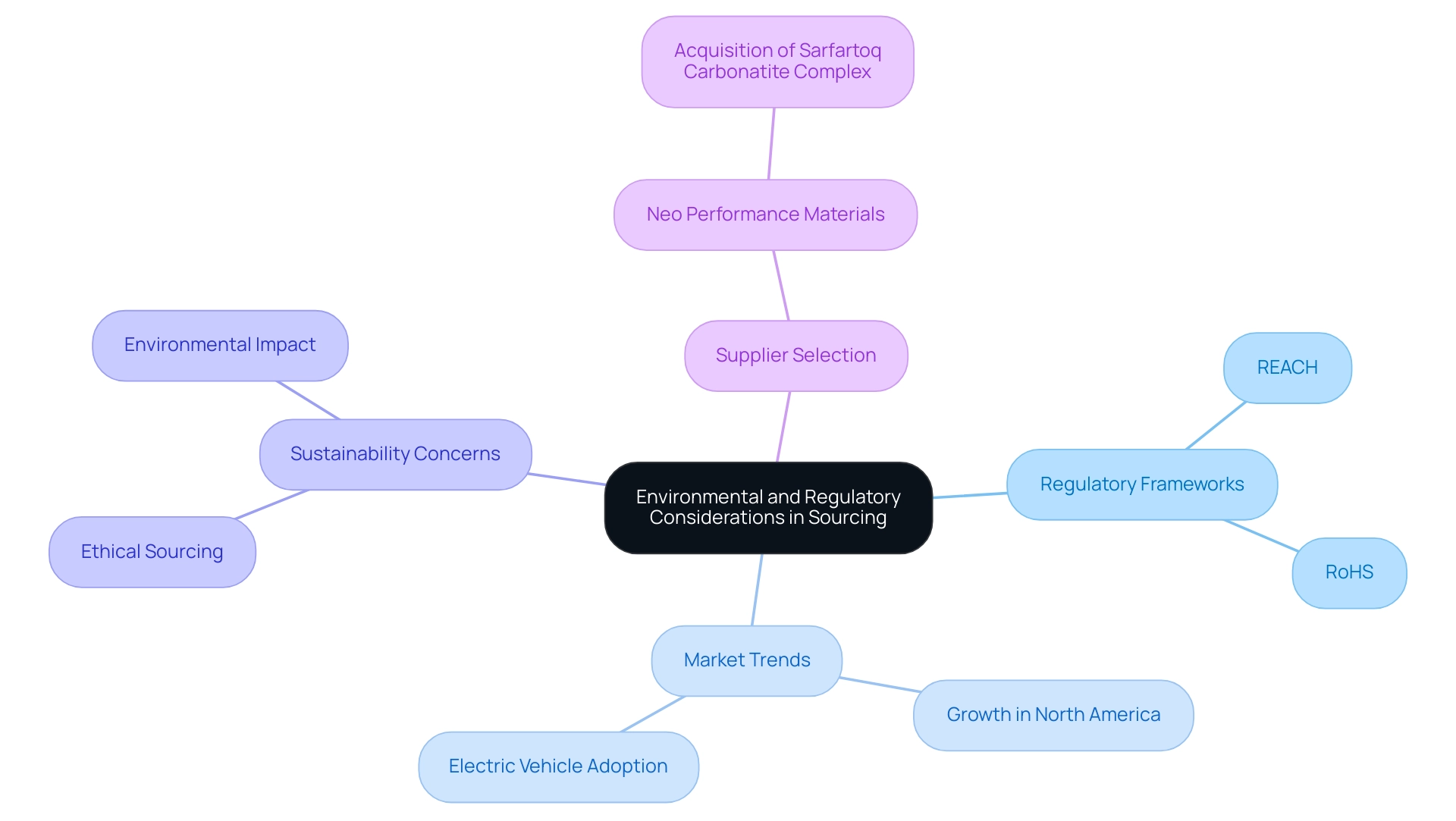
Future Trends in Magnetic Materials
In environments with explosive potential, the importance of Non-Sparking Tools cannot be overstated. These tools are specifically designed to prevent sparks that could ignite flammable materials, making them essential for safety in various industries. As purchasing managers, comprehending the uses and advantages of Non-Sparking Tools is essential for guaranteeing workplace safety and adherence to industry regulations.
Additionally, Mica Tapes play a vital role in high-temperature electrical insulation. They provide excellent resistance to heat and electrical conductivity, making them ideal for various applications, including electrical components and machinery. As the demand for high-temperature insulation solutions increases, purchasing managers should prioritize sourcing quality Mica Tapes from dependable suppliers.
This proactive approach not only enhances operational efficiency but also fosters trust with stakeholders. By staying informed about the latest developments in Non-Sparking Tools and Mica Tapes, procurement professionals can adapt their sourcing strategies effectively, ensuring timely deliveries and maintaining inventory levels amidst potential supplier shortages.
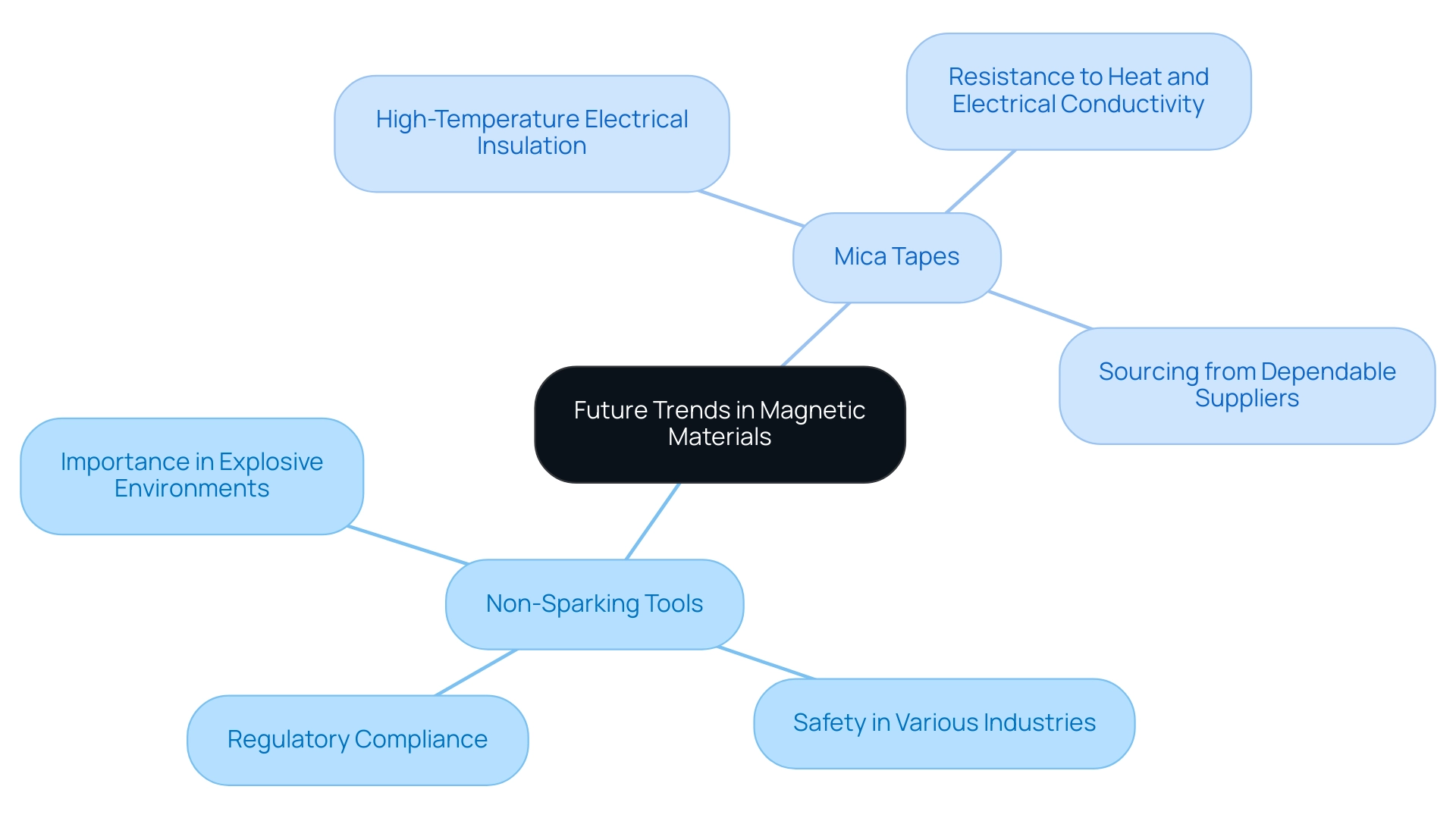
Conclusion
The intricate world of magnetic materials plays a crucial role in driving advancements across various sectors, particularly in electric vehicles and electronics. Understanding the fundamental properties of these materials, such as coercivity and saturation magnetization, is essential for procurement managers tasked with making strategic sourcing decisions amidst rising costs and supply chain uncertainties. The significance of key elements like neodymium and cobalt cannot be overstated, as they are integral to producing high-performance magnets that enhance efficiency and performance in numerous applications.
As industries continue to evolve, the applications of magnetic materials are expanding, reflected in the projected growth of the advanced magnetic materials market. The demand for lightweight and high-strength magnets is pushing innovation, especially in the context of renewable energy and consumer electronics. Procurement professionals must remain vigilant in navigating the challenges of supplier shortages and fluctuating prices, leveraging effective negotiation strategies and fostering collaboration within their teams.
Moreover, environmental and regulatory considerations are increasingly shaping sourcing practices. Compliance with standards such as REACH and RoHS is not just a legal obligation but a pathway to promoting sustainability and corporate social responsibility. By prioritizing responsible sourcing, procurement managers can align their strategies with ethical practices while ensuring a stable supply of essential materials.
In conclusion, the future of magnetic materials is bright, driven by technological advancements and a growing emphasis on sustainability. For procurement managers, staying informed about the latest trends and developments in this dynamic field is vital. Strategic sourcing decisions made today will not only impact immediate operational efficiency but also position organizations for long-term success in a competitive landscape.




